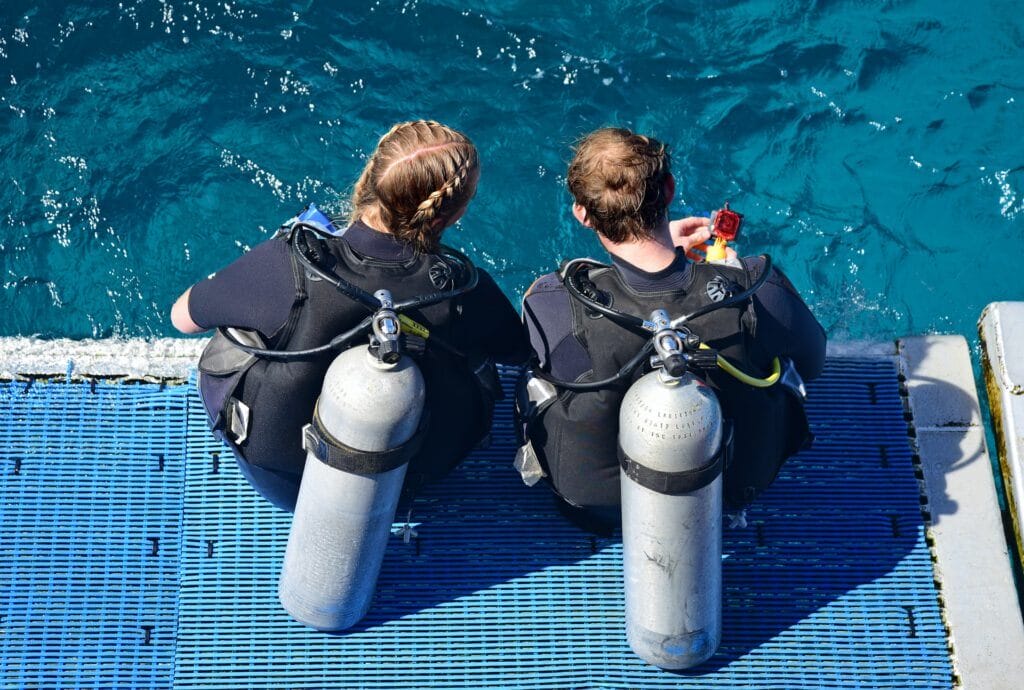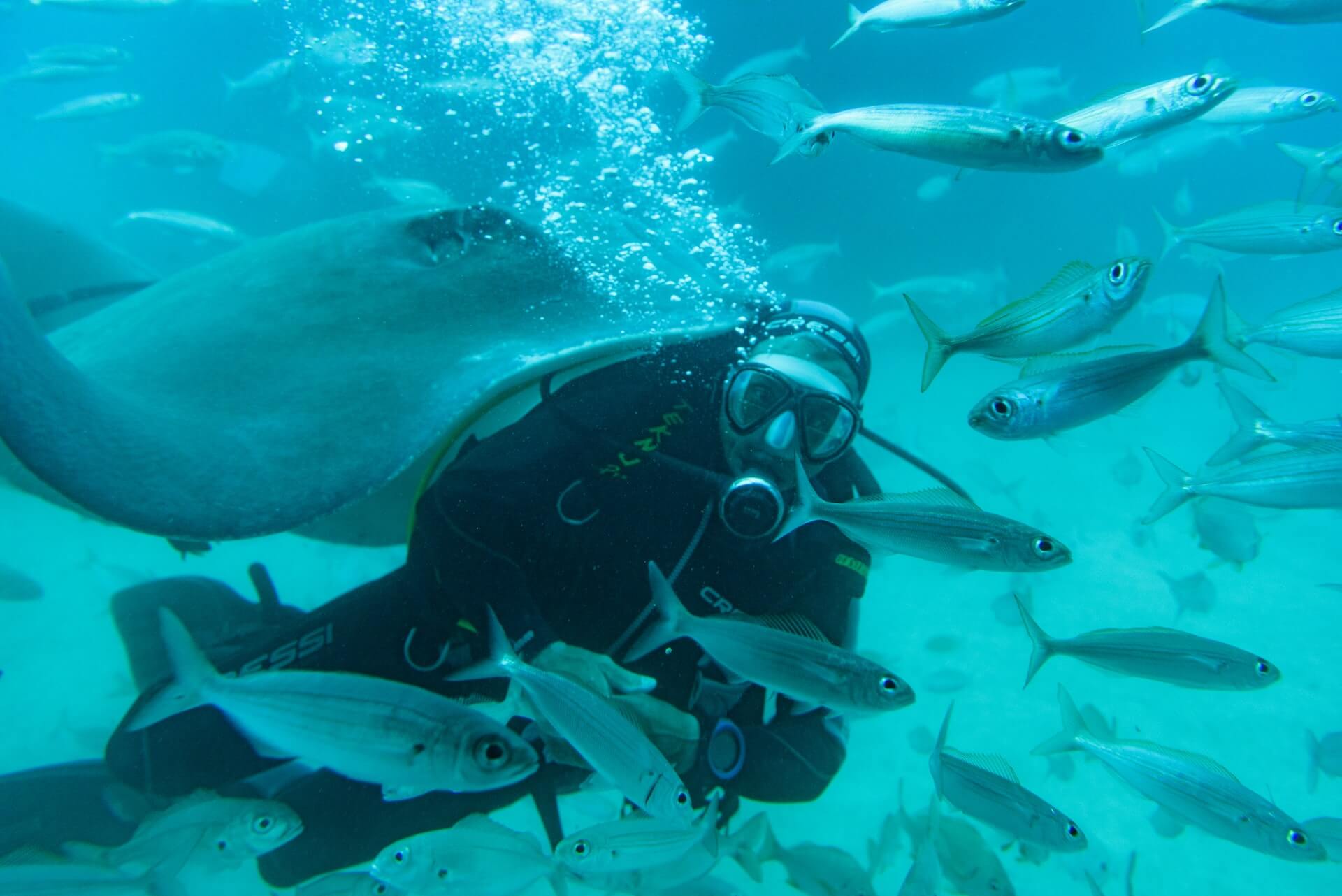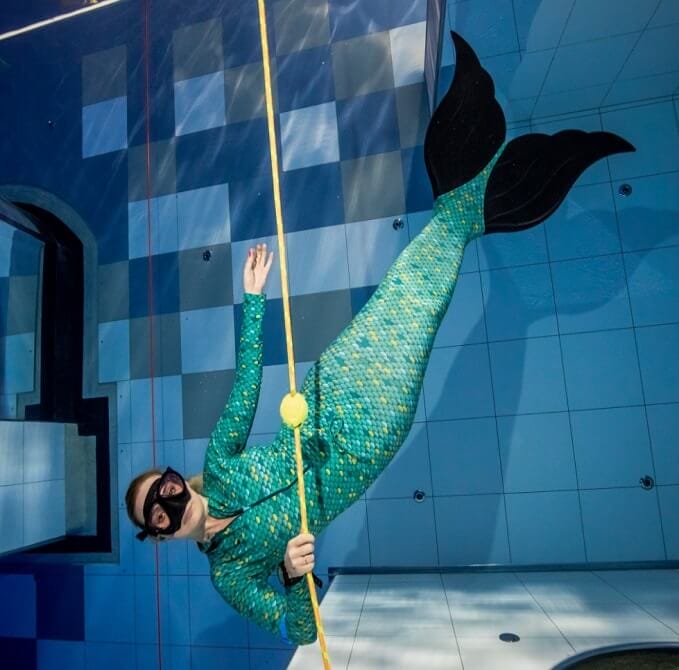Scuba diving, or scuba diving with a cylinder, is sport and recreation in one. There is something for everyone in diving. You can train and practice a lot to get better and better at technical diving and master new equipment and diving techniques. You can consider diving as a way to explore further or closer to the world. You can organize or be a participant in diving expeditions that challenge their participants like the expeditions of the old pioneers. The underwater area is still the least explored yet huge area of our planet, and being underwater can beat being in space in its appeal.
Want to qualify for an expedition to Mars? Start with diving expeditions.

Is Scuba Diving for Everyone?
To say that diving is for those who like water is to say nothing. Diving is for those who like to dive, the water can be liked later. I know divers who were thrilled on their first dive and immediately diving became their life. I also know some who were terrified and only after a few dives began to feel the beauty of weightlessness, freedom of movement and the sensation of awesomeness when we are suspended above the blue depths. On top of that, for many divers the opportunity to admire coral reefs or underwater creatures is the primary goal of scuba diving. There are also those who love wreck exploration or the challenge of deep, technical dives. There is something for everyone.
What does Scuba Diving actually mean?
In general, Scuba Diving is diving with breathing equipment, or simply put, with a cylinder of compressed air. The word SCUBA stands forSelf Contained Underwater Breathing Apparatus. For such diving, the term free diving was also coined to distinguish it from diving in heavy suits with duct-fed air typical of past divers or now underwater work. The history of free diving began with the invention of the Ganian breathing apparatus by French duo Cousteau in 1943. Since then, divers have begun to conquer the underwater world. A scuba diver is equipped with a cylinder of compressed air sufficient for about an hour of diving. A breathing machine that feeds air from a cylinder at the pressure prevailing at a given depth in the water so that we do not experience pressure changes during a dive in a more cumbersome way than during an airplane takeoff. Jacket which is a kind of cylinder stretcher and at the same time a device that changes the buoyancy of the diver, that is, to allow free diving and ascent. Wetsuit – a foam that insulates the diver in cold water. Ballast to balance the buoyancy of a foam suit. Flippers and a diving mask.
In general, when diving, a diver breathes ordinary air only compressed in a diving cylinder. This air is additionally filtered during compression to 200 atmospheres, but it is ordinary air. Oxygen or other mixtures are used only for specialized deep or long dives. All this equipment, i.e. a cylinder with a breathing apparatus, a jacket, a wetsuit, a weight belt and a mask fins and a tube, i.e. ABC equipment, allows the diver to dive and ascend freely and swim underwater. Typical diving equipment allows diving in one hour at a depth of 10 to about 30 meters.

Scuba diving is the adventure and beauty of exploring the underwater world!
Once, in an old book about a diving trip around the world, I came across a description of a large oceanic stingray. The author compared the elegance of the staggering Manta to the airplane of the future. It’s been 70 years since this book was published, and still no man-made object moves so gracefully either in the air or underwater. The three-dimensional space of the water creates amazing conditions for both humans and animals to move. One day we were incredibly lucky when a group of Mantas began to stagger around our dive group. It’s hard to say whether it was coincidence, curiosity or the accumulation of plankton combined with a comfortable current (Mantas are plankton eaters) that caused several Mantas to start swimming around us. When such a 1- or 2-ton fish swims toward you and gracefully arcs to avoid you at the last moment, you begin to understand what beauty means.
So, if you are interested in diving, want to learn about dive sites in Poland, are interested in the Great Barrier Reef of Australia or the Pacific islands, you need to start with the first step, which is to come to Deepspot for your first dive, or dive intro. Pool diving is an ideal way to learn about scuba diving with equipment. You’ll see if you like it (and you certainly will), and then you can sign up for a scuba diving course. Find a dive club or dive school in your area and inquire about a dive course in Deepspot, or come to Deepspot for a course taught by instructors working here.
We’re sure that once you try it you’ll fall in love with scuba diving just like we did 😊!












